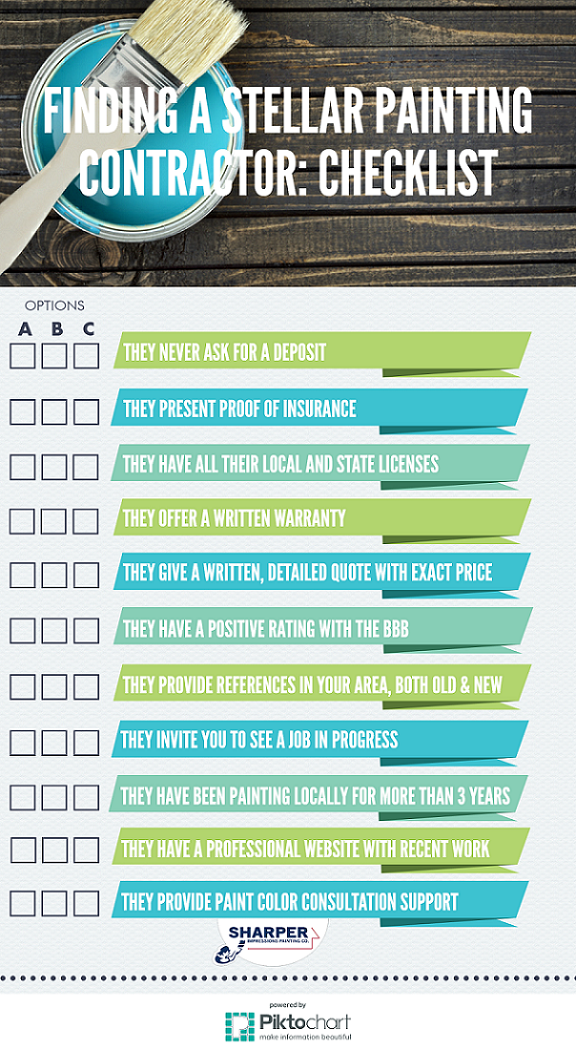Discover The Methods Which Seasonal Variables Can Influence The Success Of Industrial Exterior Paint And Figure Out The Most Effective Times To Accomplish Lasting Outcomes For Your Job
Discover The Methods Which Seasonal Variables Can Influence The Success Of Industrial Exterior Paint And Figure Out The Most Effective Times To Accomplish Lasting Outcomes For Your Job
Blog Article
Write-Up Writer-Fox Rodriquez
When you're planning an industrial external painting job, seasonal elements can make or break your outcomes. You'll wish to think about how temperature and humidity impact paint application and drying times. Selecting the best period can guarantee your paint adheres properly and lasts longer. However which periods are truly the best for this sort of work? Let's check out the key elements that can influence your job's success.
The Impact of Temperature on Paint Application
When you're preparing a business outside paint job, the temperature level can considerably affect exactly how well the paint sticks and dries.
Preferably, you want to paint when temperature levels range between 50 ° F and 85 ° F. If it's also cool, the paint might not heal properly, leading to issues like peeling or splitting.
On the other side, if it's as well warm, the paint can dry out as well promptly, protecting against appropriate adhesion and causing an uneven surface.
https://find-a-painter-near-me43109.blogscribble.com/35653273/residential-painters-boost-your-home-s-visual-appeal-with-professional-workmanship should likewise take into consideration the time of day; early morning or late afternoon supplies cooler temperature levels, which can be extra positive.
Constantly inspect the supplier's referrals for the specific paint you're making use of, as they frequently supply advice on the ideal temperature array for optimum outcomes.
Moisture and Its Impact on Drying Times
Temperature isn't the only environmental element that affects your industrial external paint job; moisture plays a substantial duty also. am painting services can slow down drying out times dramatically, impacting the total high quality of your paint job.
When the air is filled with dampness, the paint takes longer to heal, which can lead to concerns like poor adhesion and a greater threat of mildew development. If you're painting on a specifically humid day, be gotten ready for extended wait times between coats.
It's critical to monitor regional climate condition and plan accordingly. Ideally, aim for humidity levels in between 40% and 70% for optimal drying.
Maintaining these consider mind guarantees your task stays on track and delivers a long lasting finish.
Best Seasons for Commercial Exterior Paint Projects
What's the very best time of year for your commercial outside paint jobs?
Spring and very early loss are generally your best bets. Throughout these seasons, temperature levels are moderate, and humidity levels are often reduced, producing excellent conditions for paint application and drying out.
Avoid summertime's intense heat, which can create paint to completely dry as well quickly, leading to inadequate bond and finish. Likewise, winter season's chilly temperature levels can hinder proper drying and curing, risking the long life of your paint work.
Aim for days with temperature levels between 50 ° F and 85 ° F for optimum results. Remember to inspect the neighborhood weather report for rain, as wet conditions can wreck your job.
Preparation around these aspects ensures your painting project runs efficiently and lasts longer.
Final thought
Finally, planning your business external painting tasks around seasonal considerations can make a substantial difference in the outcome. By organizing job throughout the optimal temperatures and moisture levels, you'll guarantee better adhesion and drying out times. Remember to watch on regional weather report and select the right time of year-- springtime and early fall are your best bets. Taking these steps will assist you achieve a long lasting and professional finish that lasts.
